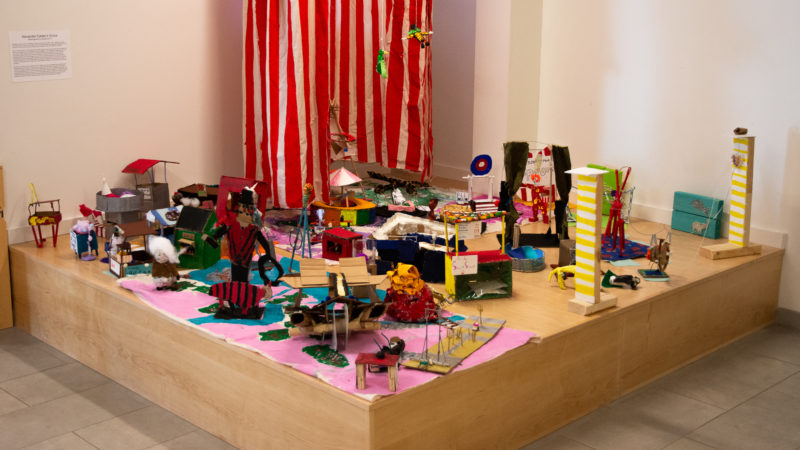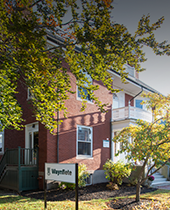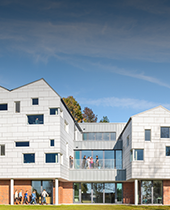Following in Calder’s footsteps
Alexander Calder was an American sculptor who lived from 1898-1976. Calder originally studied and practiced engineering. His interest in how things moved and balanced can be seen in all of his artwork.
After moving to Paris in 1926, Calder began constructing dozens of tiny figures and props for his beloved circus performance and installation. He transformed materials such as wire, wood, metal, cloth, cork, fabric, and string into clever and detailed animals, clowns, acrobats, and other performers. He made over seventy figures and animals, hundreds of accessories such as nets and flags, and more than thirty musical instruments and noisemakers. Using kinetics, Calder made each character move and would perform his circus for up to two hours for audiences. This transformation of material and objects into new forms is similar in practice to the creativity and ingenuity so dramatically portrayed in book The Boy Who Harnessed the Wind.
Seventh-grade students in Studio Art drew inspiration from Calder’s Circus and created three-dimensional representations of their own invented circus performers and props. Using the same basic material as Calder, students were asked to create their own characters and props. Many are engineered to move. The class discussed what it means to transform material through craftsmanship and also how play can be a conceptual means to creating art. Students had to troubleshoot design failures and come up with varying approaches to fabricate their two-dimensional ideas into three dimensions with volume, form, and attention to detail.
Stop by the Lower School lobby to check out the exhibit, which will be up until mid-November!



